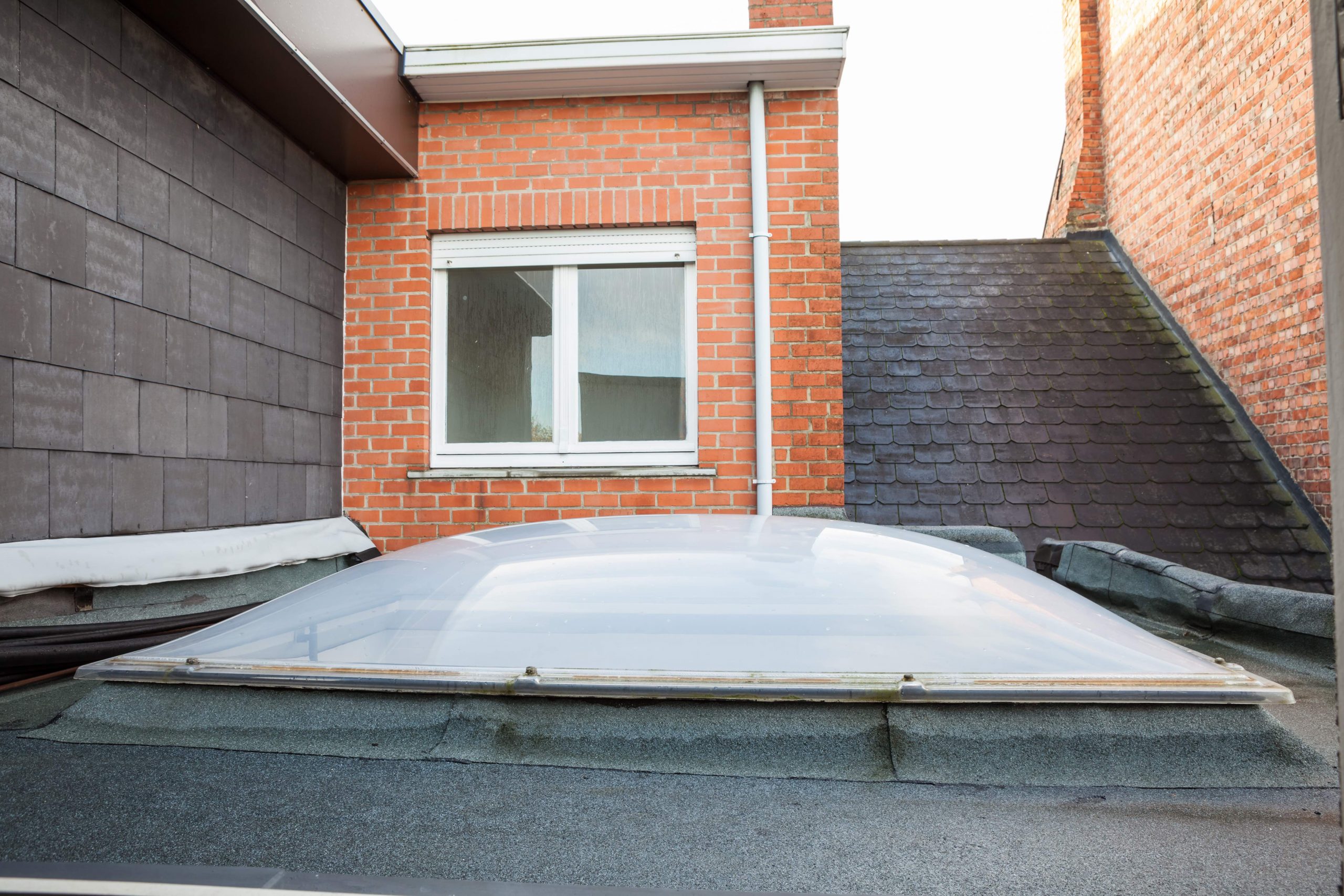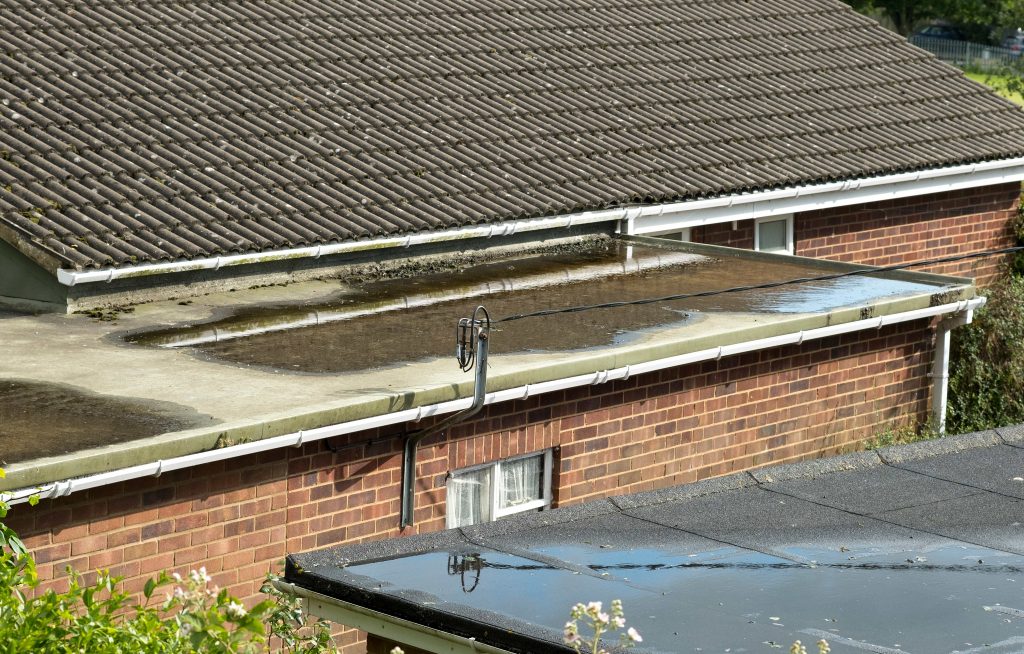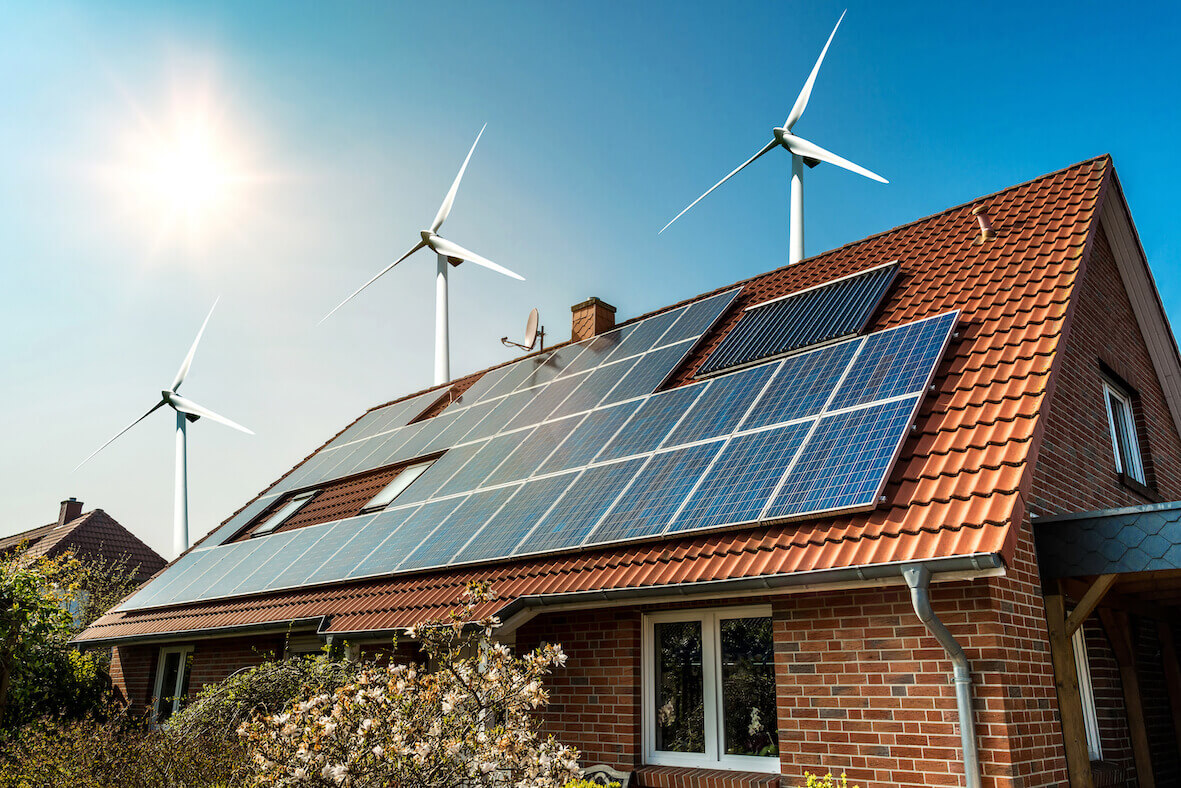Flat roof problems
Flat roofs are still prevalent across the UK, particularly in areas with a large number of flats and apartment blocks. But low rise housing flat roofs are also found on extensions and in some areas, there are a large number of flat-roofed modernist houses.
Whether you already own a property with a flat roof or are thinking of buying one, there are some essential maintenance tips you should be aware of.

Defects and failures with flat roofs
Defects on flat roofs can arise because of problems with the coverings or the structure/decking. There is a common misconception that the felt coverings have a life span of 10 to 15 years. Felt roofs of this age can continue to perform well if the owner continues to maintain and protect them. But all too often, poor maintenance or lack of additional treatments such as gravel or solar reflective paint, as well as movement within the roof structure itself, can lead to premature failure.
Broadly there are two variations of a flat roof:
- cold roofs (in which the insulation is located at ceiling level); and
- warm roofs (in which the insulation is located either immediately below the roof membrane or above it (inverted roof).
But before you attempt a repair, you should obtain an accurate diagnosis from a qualified professional. Understanding whether or not the failure is due to system or detail will help you to determine the most suitable and cost-effective solution.

So, what is a flat roof system failure?
A system failure is simply a failure in the roofing material that could occur at any point over the roof. For example, a defective roofing specification (unsuitable insulation, missing vapour barrier, unsound deck) could promote multiple failures. If one defective area is repaired, there is every likelihood that other defects could occur elsewhere for the same cause. In the case of a system failure, replacement of the entire roof is probably the only sensible option.
| Basic cause | Materials at risk | Effects |
| Problems due to moisture
|
|
|
| Problems due to temperature
|
|
|
| Problems due to a combination of moisture-sensitive and temperature-sensitive materials |
|
|
| Problems due to poor design |
All.
|
|
What is a detail failure?
A detail failure occurs at a specific point or points on the roof and is related in some way to the detailing of the roof covering. Repair would be possible, with no reason to doubt that the remaining areas would perform adequately.
Examples of detail faults include:
| Basic cause | Materials and locations at risk | Effects |
| Moisture
|
|
|
| Temperature
|
|
|
Recommendations for flat roof issues
We recommend that a flat roof be inspected twice a year, preferably in the spring and autumn. Clear the roof of leaves, debris, and dirt that can prevent proper drainage or cause degradation. And arrange for a professional inspection of the roof after storms, including the rainwater goods, valley gutters and rainwater outlets.
The Royal Institution of Chartered Surveyors (RICS) has provided a list of considerations if you are looking to buy, or already own, a home with a flat roof.
Pros
- Flat roofs are generally less expensive to construct given the reduced areas involved
- The construction period is often shorter compared to traditional pitched roofs given their simpler style
- Access is broadly easier
- Internal space is not imposed on given reduced roof pitch angles
- Flat roofs are often considered more contemporary, aesthetically, than pitched roofs.
Cons:
- Flat roofs generally require a greater degree of maintenance – even more so if the surface is disturbed and damaged by people frequently walking over it
- Flat roof drainage is historically not as effective as traditional pitched roofs and standing water (ponding) can be an issue if falls are not adequate
- Typically, the life span of a flat roof is not as long as a traditional pitched roof – even less so if it is vulnerable to damage
- Successful sealing of flat roofs from water ingress can be problematic if not correctly executed
- Roof repairs are generally more expensive than traditional pitched roofs. The need for higher level of maintenance and more frequent and possibly serious repairs can only add to this.



